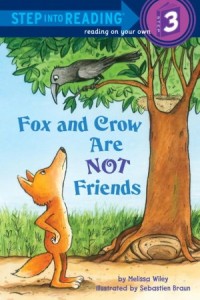“I’m really starting to like tarantulas.”
So says Rilla. Her father does not approve. Her father is not a fan of tarantulas.
But he’ll forgive me, because he knew what he was getting into when he married me—the runaway train of my enthusiasm. How did we get on to spiders this morning? Rose said something about liking them; I think that was it. Beanie shuddered; she sides with her daddy on this one. Rose and I had a sudden impulse to go outside and see how many different kinds of spider we could count. Oddly, the pickings were slim: we only found two. Usually, they’re everywhere you look, causing some small child or other to shriek and run away. But there were two tiny ones of a species we’ve yet to identify, teensy oblong things with thin stripes of brown and tan, poised on webs stretched between the stems of the rose bush. Look, said Rose, I found this out yesterday: if you put a bit of twig in the web, the spider will come and snip it out. We waited, but the spider was on to us, frozen, silently glaring. Ten minutes later, after we’d roamed the yard in search of others, the twig was gone.
By chance—or maybe this is what put spiders on Rose’s mind this morning?—I’d pulled Fabre’s Life of the Spider off the shelf a day or two ago, thinking it might make a nice nature-study read for the summer, and added it to the high-tide stack in the living room. At the time, I wasn’t at all sure it would grab my girls—read-alouds are a challenge, these days, with one sweet boy endlessly butting in with questions, and the other impish one endlessly butting you with his head. But they were interested, so I gave it a try. Note to writers: If you want to hook an audience of 6-13-year-olds, “Chapter 1, The Black-Bellied Tarantula” is a sure-fire way to begin.
The Spider has a bad name: to most of us, she represents an odious, noxious animal, which every one hastens to crush under foot. Against this summary verdict the observer sets the beast’s industry, its talent as a weaver, its wiliness in the chase, its tragic nuptials and other characteristics of great interest. Yes, the Spider is well worth studying, apart from any scientific reasons; but she is said to be poisonous and that is her crime and the primary cause of the repugnance wherewith she inspires us. Poisonous, I agree, if by that we understand that the animal is armed with two fangs which cause the immediate death of the little victims which it catches; but there is a wide difference between killing a Midge and harming a man. However immediate in its effects upon the insect entangled in the fatal web, the Spider’s poison is not serious for us and causes less inconvenience than a Gnat-bite. That, at least, is what we can safely say as regards the great majority of the Spiders of our regions.
Nevertheless, a few are to be feared; and foremost among these is the Malmignatte, the terror of the Corsican peasantry. I have seen her settle in the furrows, lay out her web and rush boldly at insects larger than herself; I have admired her garb of black velvet speckled with carmine-red; above all, I have heard most disquieting stories told about her. Around Ajaccio and Bonifacio, her bite is reputed very dangerous, sometimes mortal.
Well played, Monsieur Fabre.
Of course we had to look up these twin terrors, the malmignatte with her thirteen red spots, and the tarantula, about whom Fabre’s predecessor, Leon Dufour, waxes quite lyrical: “…when I was hunting her, I used to see those eyes gleaming like diamonds, bright as a cat’s eyes in the dark.” Off we trotted to Wikipedia, for pictures, and YouTube, for pictures that move.
After which appetizing display it was time for lunch.

